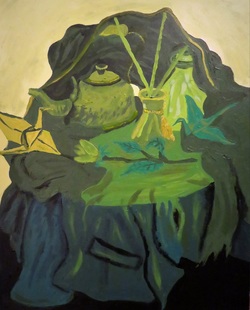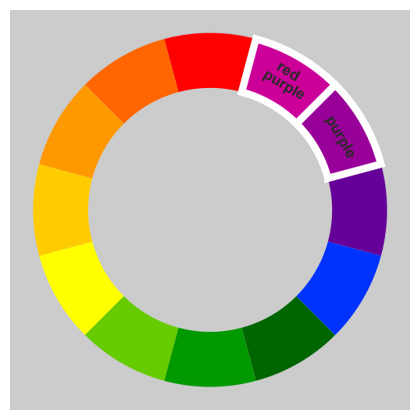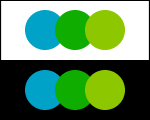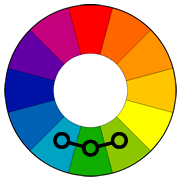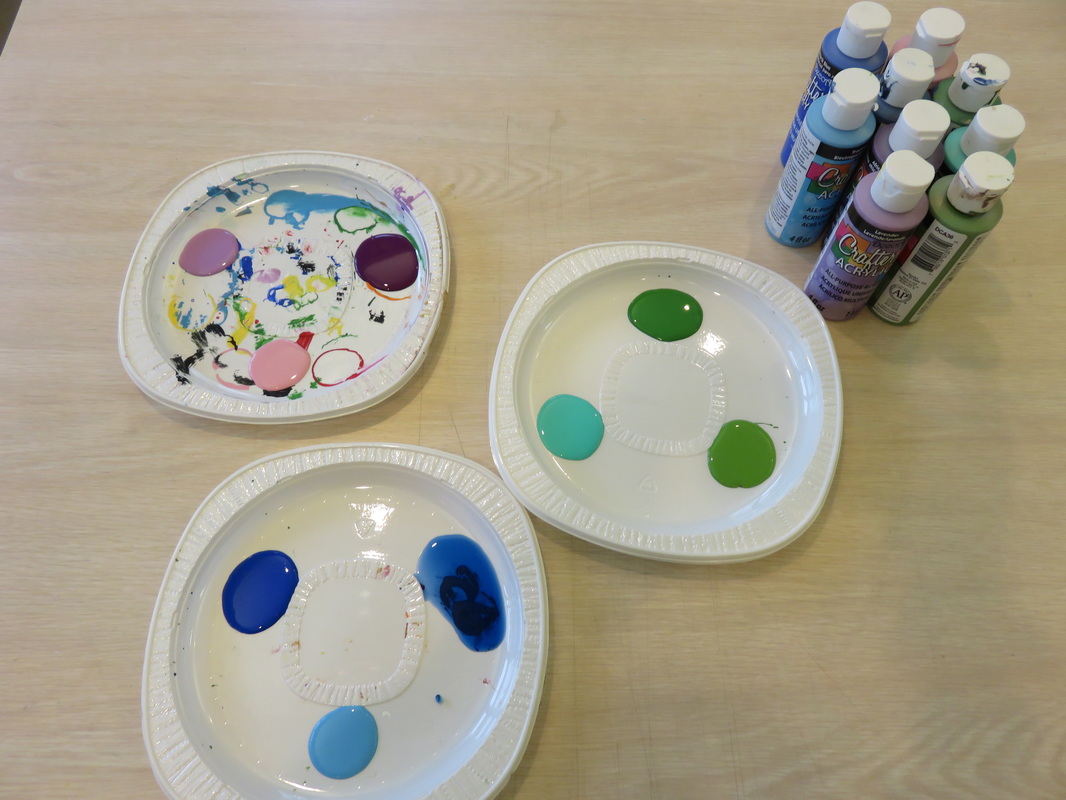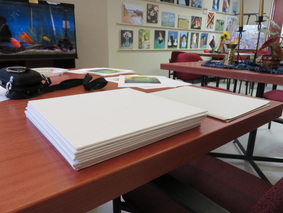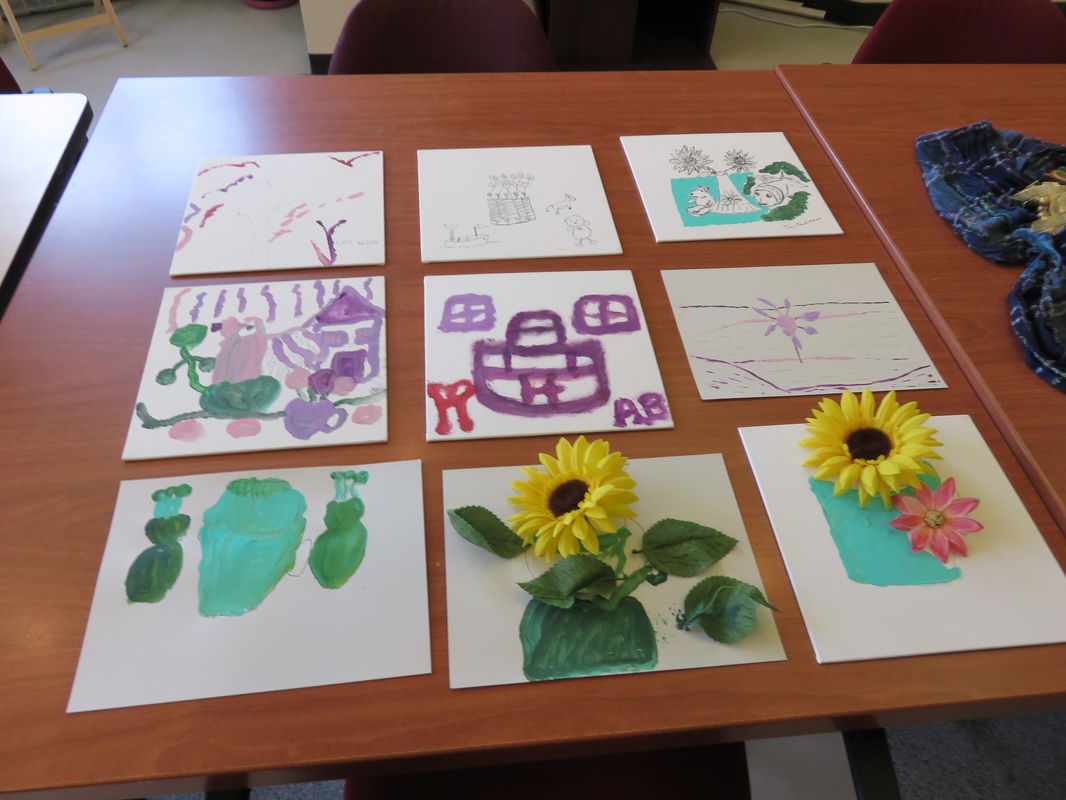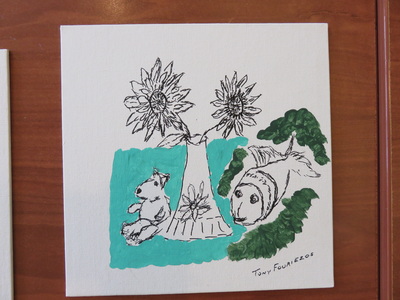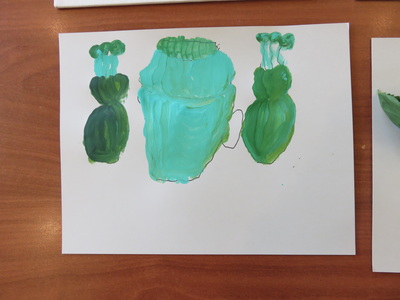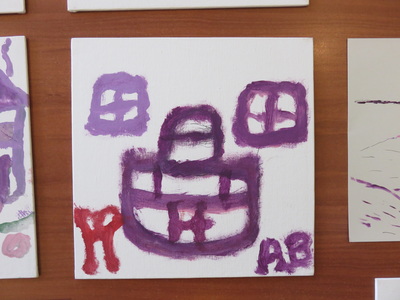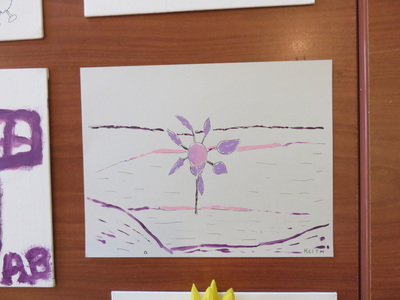Activity
The Analogous Still-Life
Analogous Still-life by Sinthia Cousineau
Rationale
The participants require an activity that involves using very little material, as they are limited in their mobility. Ideally the activity should be conducted from the participant’s seats, without them requiring getting up for the materials. Therefore the materials should be provided to the participants so that they can reach them. The activity is meant for them to examine the materials and express their ideas. The main role of art for these participants is to provide them with therapeutic means to express themselves and socialize with their peers. Considering that most of the participants suffer from cognitive or memory loss, this activity encourages them to use their imagination and challenge their cognitive abilities.
The participants need constant encouragement and motivation from student teachers and volunteers, who will assist them to produce their artworks. The participants require a calm and relaxing environment. The materials should be easy to manipulate and explanations should be brief but clear.
The main purpose of this activity is to allow participants to explore different ways of manipulating color, by having them produce a still life painting using analogous colors. The participant will learn how to use analogous colors through the selection of drawing tools offered to them.
The participants need constant encouragement and motivation from student teachers and volunteers, who will assist them to produce their artworks. The participants require a calm and relaxing environment. The materials should be easy to manipulate and explanations should be brief but clear.
The main purpose of this activity is to allow participants to explore different ways of manipulating color, by having them produce a still life painting using analogous colors. The participant will learn how to use analogous colors through the selection of drawing tools offered to them.
An Analogous Painting by one of my Students
Objectives
Learning Objectives:
- The participants will learn how to create a still life painting by observing the objects placed in front of them.
Art-making Objectives:
- Participants will be able to understand how they can use different colors, which are similar to each other to represent an image, which in this case is a still life.
- They will explore the basic concepts of analogous colors. Each participant will be presented with a selection of 3 analogous colors already prepared by the instructor.
Art Appreciation Objectives:
- Participants will be introduced to artworks of other artists, and be able to discuss how these artists used analogous colors. They will gain inspiration from these artists to use in their own works.
- Example of an artist: Van Gogh (analogous sunflower)
“Van Gogh’s Sunflower”
Social Objectives:
- To enable participants to communicate with each other about their artwork as well as allow them to socialize during the art-making process.
- To experience a friendly environment
- to experience social connection with other participants
- To provide participants with an environment where they can respect each other’s company and art skills.to provide participants with an environment where they are able to express themselves and their emotions through art making.
Materials
Note:
- Colors should be divided into analogous colors at the start of the activity. Participants will choose the analogous colors they wish to use from the selection offered to them. Each participant will use 3 colors that belong to an analogous group.
Motivation: Discussion Questions
- What colors do you see in Van Gogh’s painting of a sunflower?
- Are these colours warm or cool?
- What are analogous colors?
- What analogous colours did he use?
Preparation & Room Setup
Three Still-Lives Stations
Procedure
Step 1: Observational outline of self-portrait (10mins)
Step 2: Adding analogous colours (20mins)
- They will pick a group of analogous colour to use from a selection of paints that was already divided into analogous colours by the art educator.
- They will add these colours to their observational drawing of their still life.
Step 3: Discussion of their still life in groups (5 mins)
- They will be given time to discuss their portraits with the group they are sitting with.
Step 4: Hand in their still life
- Once the discussion is over they will submit their drawing to the art educator before leaving, whom will later display it somewhere in the classroom.
Display of my Participant's Artwork
Closure
- Once the lesson is completed, the art educator could ask the participants for feedback about what they thought about the lesson and whether or not they enjoyed it.
- Afterwards the art educator could set up a display for all the still life paintings on the wall of the classroom to show participants for the next class.
Questions to ask participants after they finish their work:
- Did you enjoy the activity?
- Do you like working with analogous colours. Why or why not?
- What did you like about drawing objects?
Vocabulary
Analogous Color:
Color Wheel:
Still life:
- These are colours that are next to each other on the colour wheel.
- Example: red, red-orange, and orange.
Color Wheel:
- A circular design that displays the colours, which is used by artists to help organize colours.
Still life:
- Is a name given to an artwork that depicts mostly inanimate objects as the subject matter. Examples: food, flowers, plants, shells, drinking glass, vases, etc.
Artworks by my Students
Keeping in mind that most of the participants suffer from dementia and mobility loss, I was rather impressed with the results. One participant actually dismantled my still-live objects to include them in her painting. Another participant suffering from severe cognitive loss was barely able to trace a line but yet managed to include several analogous colors.
Lesson Plan
By Sinthia C
| analogous_stll-lives.docx |
